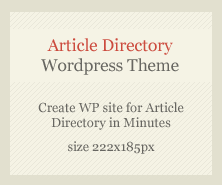Wall art is more than just decoration — it plays a key role in shaping the atmosphere, energy, and culture of a workspace. In modern office interior design, wall art is used not only to beautify spaces but also to inspire employees, communicate brand values, and create a positive work environment. Whether you’re designing a collaborative coworking space or a corporate office, the right wall art can transform bland walls into creative hubs.
In this article, we explore the different types of wall art used in office interiors and how each contributes to an inspiring and productive workplace.
1. Motivational Quotes and Typography Art
Best for: Break rooms, meeting rooms, common areas
Motivational quotes are a timeless classic in office wall décor. Using large typography with bold fonts and impactful colors, these artworks can deliver strong messages about teamwork, growth, leadership, and resilience.
Whether it’s a single powerful phrase like “Think Big” or a company manifesto painted across a wall, these pieces foster a growth mindset and can boost employee morale. They also make great conversation starters for visiting clients or potential hires.
2. Abstract Art
Best for: Reception areas, executive offices, lounge spaces
Abstract art adds a sophisticated and modern touch to an office. Since it doesn’t depict recognizable scenes or objects, it encourages viewers to interpret it in their own way, which can spark creativity and discussion.
Abstract pieces often use bold colors, unique textures, and interesting forms that can set the tone for a space — calm and minimal, or vibrant and energetic — depending on your brand’s personality.
3. Brand-Centric Art
Best for: Lobby, entrance areas, boardrooms
Every brand has a story. Brand-centric art captures that story visually — using your company’s logo, colors, mission statements, key milestones, or even your team’s photos.
These custom installations create a strong first impression for clients and reinforce a sense of purpose among employees. They also serve as a constant reminder of your organization’s vision and values.
4. Nature-Inspired Wall Art (Biophilic Themes)
Best for: Relaxation areas, reading corners, hallways
Wall art inspired by nature — such as botanical illustrations, forest murals, or scenic photography — taps into biophilic design principles, which suggest that natural elements improve well-being and productivity.
Nature-themed art can make a sterile office feel more grounded and calming, reducing stress and increasing focus. When paired with indoor plants or wooden textures, it creates a refreshing balance between the digital and natural worlds.
5. Geometric and Minimalist Art
Best for: Tech firms, startups, modern workspaces
Geometric patterns and minimalist designs are clean, visually pleasing, and versatile. They work well with modern office designs that emphasize simplicity and function. Whether it’s framed prints or wall decals, geometric art adds structure and balance to a room.
This type of art also suits agile and hybrid workspaces, where flexibility and clarity are essential for employee focus and flow.
6. Interactive and Writable Walls
Best for: Brainstorming areas, innovation labs, meeting rooms
Why just look at the art when you can be part of it? Writable chalkboard or whiteboard walls allow employees to brainstorm ideas, sketch workflows, or leave messages for each other.
This interactive form of wall art adds utility while making the office feel more dynamic and collaborative. You can also consider magnetic wall surfaces for visual project planning or team updates.
7. Local Culture or Art Installations
Best for: Offices in cities with rich cultural backgrounds or global branches
Highlighting local artwork or city landmarks connects your office to the community it belongs to. It adds authenticity and diversity to the workspace, making it more relatable for employees and guests alike.
This can include wall murals painted by local artists, traditional patterns, or photography of nearby architecture and culture — a great option for global brands aiming to localize each office branch.
8. Custom Murals and Hand-Painted Art
Best for: Large walls, corridors, or brand-specific zones
If you want your space to feel truly one-of-a-kind, custom murals are the way to go. These hand-painted artworks can tell a visual story about your brand journey, illustrate your values, or simply add a creative spark.
Hiring a muralist to design a large wall can completely transform the space and offer a sense of identity no mass-produced art can match.
9. Photographic Wall Art
Best for: Meeting rooms, reception, open workspaces
High-resolution photographic prints can instantly elevate the professionalism of your office. Black-and-white portraits, cityscapes, industrial scenes, or even your own team photos can personalize the space.
This type of wall art works especially well in companies focused on visual media, marketing, travel, or architecture — where showcasing quality visuals reflects the brand’s expertise.
10. Digital and Motion Art
Best for: Tech companies, digital marketing firms, creative agencies
Want your wall art to move? Digital installations such as LED wall displays, projection mapping, or even video loops can turn static walls into live canvases. These offer endless possibilities for animation, seasonal themes, or data visualizations.
While more expensive, digital art makes a strong statement about innovation and adaptability — ideal for brands at the cutting edge of technology.
Conclusion: Let Your Walls Speak Creativity
Office walls are no longer just structural boundaries — they’re storytelling canvases. Choosing the right type of wall art can dramatically improve the look and feel of your workplace, create a positive emotional response, and encourage collaboration and creativity.
Whether you lean toward motivational quotes, custom murals, or biophilic prints, make sure your choices align with your company culture and brand aesthetics. With the right approach, wall art can turn a generic office into a vibrant, inspiring space where ideas thrive.
